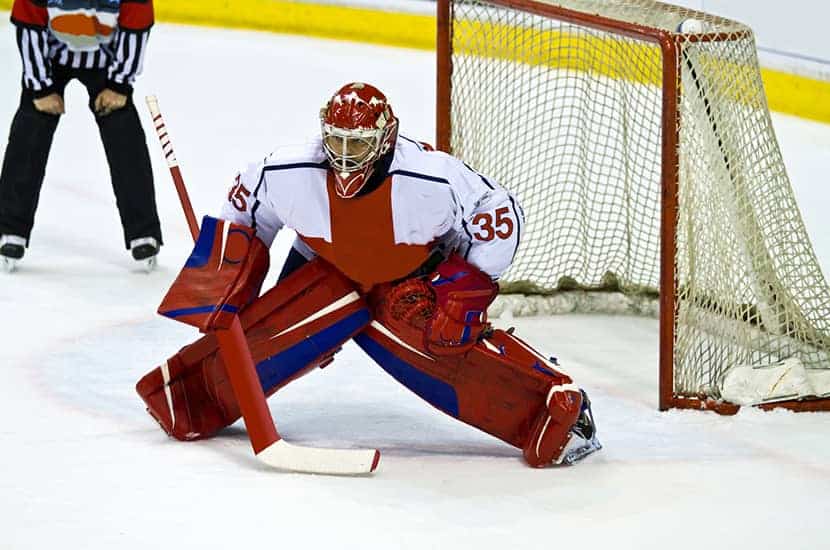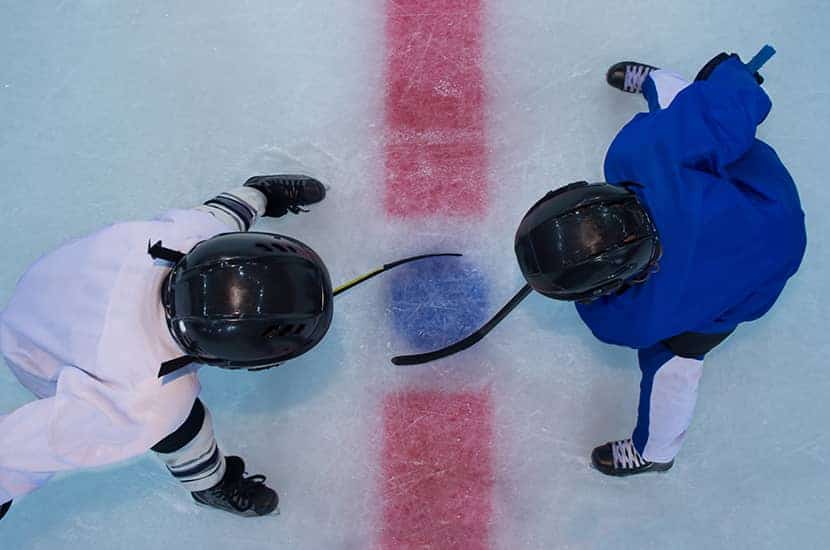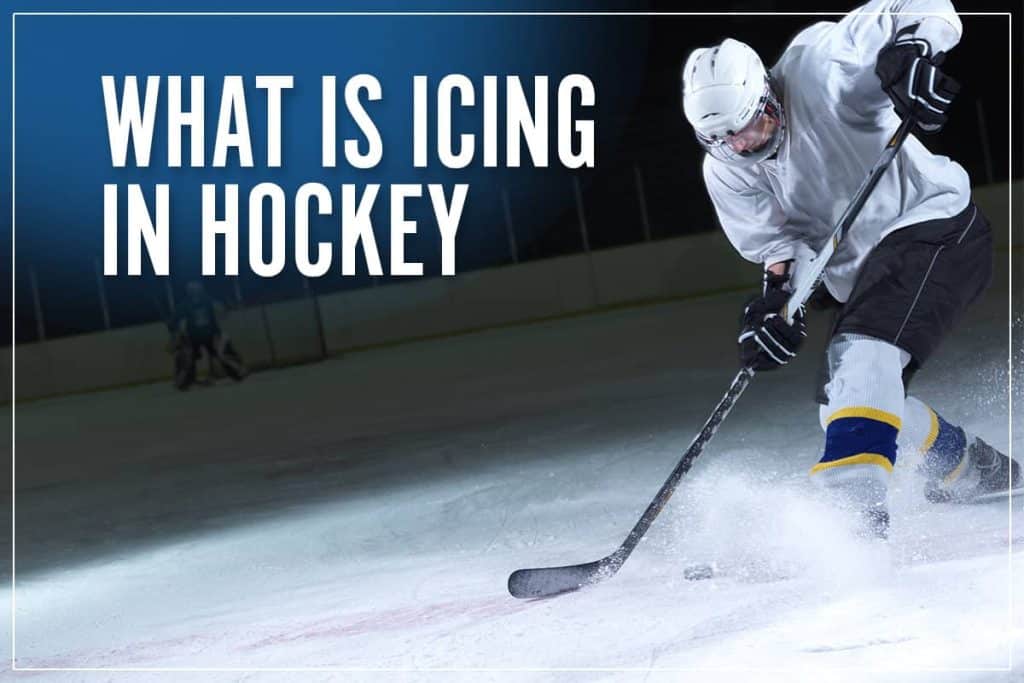If you’re new to the game of hockey, some of its rules can be confusing. Maybe you’ve heard icing called while watching a game before, or you’ve heard players talk about it and you’re wondering – what is icing in hockey?
This article will explain the icing rule in hockey, including where it came from and some exceptions. The basic icing rule is pretty simple: if the puck is shot from a player’s own side of the rink and the puck crosses the goal line, an icing infraction has occurred. However, there are a few exceptions and complications to this rule that can make it a bit confusing. This article should clear up all your confusion to do with icing!
In a game of hockey, icing refers to when any player shoots the puck from anywhere on their side of the center red line, and the puck crosses the goal line. It is considered an infraction to ice the puck and results in immediate stoppage in play. Also, make sure to read our top list of hockey pucks to get right now here.
Origins Of Icing

Essentially, if a team is in the lead, all they need to do to win is prevent the other team from scoring. Shooting the puck all the way across the ice with no stoppage in play uses up precious seconds of time for an opposing player to retrieve it. This was frustrating for both the losing team and hockey fans, and so the NHL amended its rules and introduced the concept of icing, making it illegal. If you would like to learn more about how to improve your hockey playing skills, check out our dedicated article Hockey Positioning Tips.
The icing rule was introduced by the National Hockey League in 1937. This was because teams were beginning to use it as a delaying tactic towards the end of a game when they had the lead.
What Doesn’t Count As Icing?
- If the puck is shot before the red line, but does not cross the goal line, it is not icing.
- The linesman can refrain from making an icing call if he believes the opposing team had the ability to play the puck before it reached the goal line. This removes the danger of a defensive player allowing the puck to dribble across the line simply to invoke the icing rule.
- Icing is not called if a player from the team that shot the puck touches it first after it passes the goal line.
Check out our review of the best synthetic ice if you are thinking about making your own rink at home.
What Are The Consequences Of Icing?

No-Touch Icing
We misled you slightly with number 3 in our list of exceptions! That was the initial rule, but the race to the puck often resulted in defensive players being checked hard from behind by an opposing offensive player.
To prevent further injury, the concept of no-touch icing or hybrid icing was introduced. Today, the race is no longer initially to touch the puck, but instead is to the face off dots in the defensive zone. If the defending player reaches the face off dots first, icing is called. However, if the potential icing player gets there first, the players must continue to race to the puck. In case you are a beginner at skating, read our ultimate beginners guide on How To Lace Hockey Skates.
Icing While Killing A Penalty
There is one more case in which there are no consequences for icing, and that is during a penalty kill. After a penalty, the shorthanded team is allowed to ice the puck without consequences. Looking for the best hockey gear and equipment to take your game to the next level? You can find everything you need to know in Best Hockey Skates, Best Helmets For Hockey, Best Hockey Gloves, Best Hockey Sticks and Best Hockey Rebounder.
This rule was introduced by the NHL in 1939, apparently in reaction to the Montreal Canadiens. Their power play was so explosive that it was deemed necessary to introduce a rule so the shorthanded team was not too disadvantaged!
Frequently Asked Questions
What Is The Point Of Icing In Hockey?
The point of icing in hockey is to delay the opposing players. If the puck has crossed the whole rink, they have further to go to retrieve it. Hockey players may ice the puck towards the end of the game if they are in the lead. As the last minutes are ticking away, it makes it harder to score before the final whistle is blown.
What Happens When A Player Commits Icing?
When a player commits icing, the referee calls it by blowing his whistle and raising his other hand, and play is stopped. There is then a faceoff in the zone of the team that iced the puck. The player does not receive a penalty, as it is considered only a minor offense.
Why Is Icing Illegal In Hockey?
Icing is illegal in hockey because it is a delaying tactic. If you ice the puck, you are essentially stealing time from your opponents without making any significant contribution to the game play. It is frustrating for your opposing players, but more importantly, it is frustrating for the spectators. Nobody wants to watch players shoot the puck across the ice the whole game – they want to see goals and real action!
What Is Icing And Why Is It Important When Playing Hockey?
Icing is when a player shoots the puck from behind the center line and it crosses the red line of the goal. It is important to be aware of icing when playing hockey so that you do not do it, and also so that you notice when an opposing player ices the puck. For icing to be called, a defending player must reach the faceoff dot in the defensive zone or the puck before an offensive player from the other team.
Why Do Goalies Raise Their Glove For Icing?
Goalies raise their glove for icing to let their team members and the referee know that it has occurred. They are often the first to notice because they are closest to the red line of the goal. However, icing is called only if a defensive player (not the goalie) reaches the faceoff dots or touches the puck before the offending team.
Conclusion
Hopefully, you now know the answer to the question of what is icing in hockey? Now when you play ice hockey, you know what to do if you ice the puck or if players from other teams do so. Non-pro hockey varies in terms of the details, but most leagues enforce the icing rule. Even if you aren’t a hockey player, this knowledge will increase your enjoyment when you watch the game!

